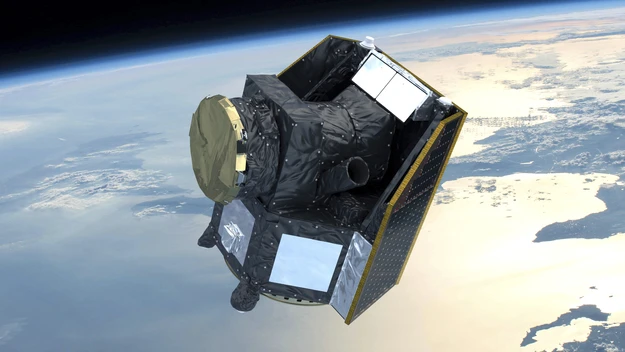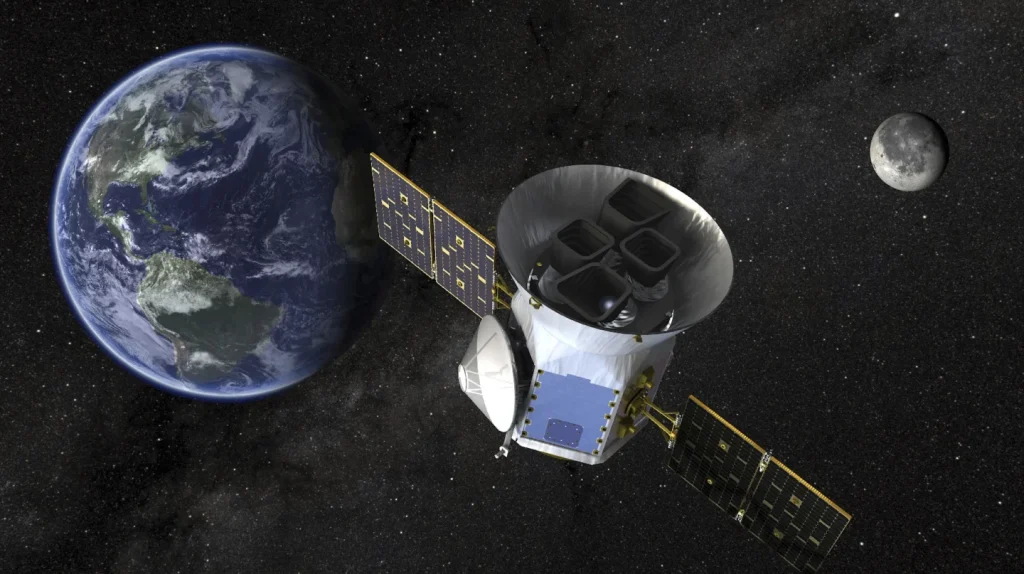The recent discovery of a rare in-sync solar system with six planets has captivated the attention of astronomers and space enthusiasts alike.
This remarkable find, located 100 light-years away in the constellation Coma Berenices, has provided scientists with valuable insights into the formation and evolution of solar systems within the Milky Way galaxy.
The discovery, which was announced by astronomers at Cape Canaveral, Fla., represents a significant breakthrough in our understanding of the cosmos.
The six planets within this unique solar system are said to be moving in perfect harmony, resembling a grand cosmic orchestra that has remained untouched by external forces since their inception billions of years ago.
This unparalleled level of synchronicity has sparked a renewed sense of wonder and curiosity within the scientific community, as it challenges our existing knowledge of planetary formation and dynamics.
The implications of this discovery extend far beyond the confines of our own solar system. By studying the intricacies of this in-sync solar system, astronomers hope to gain a deeper understanding of the processes that govern the creation and evolution of planetary systems throughout the universe.
This newfound knowledge has the potential to revolutionize our current understanding of cosmic phenomena and could pave the way for groundbreaking discoveries in the field of astrophysics.
The significance of this discovery is further underscored by the collaborative efforts of NASA’s Tess and the European Space Agency’s Cheops, two state-of-the-art planet-hunting satellites that played a pivotal role in the observation and documentation of this extraordinary solar system.
Their combined capabilities and cutting-edge technology have enabled astronomers to capture detailed insights into the inner workings of this celestial marvel, shedding light on the complex interplay of gravitational forces and celestial mechanics that have shaped its evolution over eons.
As we continue to unravel the mysteries of the cosmos, the discovery of this in-sync solar system serves as a poignant reminder of the boundless wonders that await us beyond the confines of our own planet.
It is a testament to the tireless dedication and unwavering curiosity of the scientific community, as they strive to push the boundaries of human knowledge and explore the enigmatic realms of space.
In conclusion, the discovery of a rare in-sync solar system with six planets represents a monumental achievement in the field of astronomy.
Its implications are far-reaching, offering valuable insights into the formation and evolution of planetary systems within the Milky Way galaxy and beyond.
As we embark on this exhilarating journey of cosmic exploration, we are reminded of the infinite possibilities that lie within the vast expanse of the universe, waiting to be unveiled and understood.
The search for habitable planets outside of our solar system has been a topic of great interest and fascination for astronomers and scientists alike. However, despite the discovery of numerous exoplanets, none of them seem to be in perfect synchrony within their star’s habitable zone.
This is a crucial factor in determining the potential for life on these planets, as the habitable zone is the region around a star where conditions are just right for the existence of liquid water, a key ingredient for life as we know it.
Without being within this zone, the likelihood of finding life, at least in forms that we are familiar with, becomes significantly diminished.
While this may be disheartening for those hoping to find extraterrestrial life, it also serves as a reminder of the delicate balance and specific conditions required for life to thrive, and the need for further exploration and understanding of the cosmos.
Adrien Leleu of the University of Geneva, a member of an international team that recently published their findings in the prestigious journal Nature, remarked, “Here we have a golden target” for comparison.
The star in question, known as HD 110067, is believed to potentially harbor even more planets. The six planets discovered so far are significantly larger than Earth, with densities more akin to the gas giants in our own solar system.
Their orbits, ranging from nine to 54 days, place them much closer to their star than Venus is to the sun, resulting in extremely high temperatures.
These gas planets are thought to possess solid cores composed of rock, metal, or ice, surrounded by thick layers of hydrogen, according to the scientists. Further observations are necessary to ascertain the composition of their atmospheres.
The remarkable synchronization of the six planets in this solar system is truly a marvel of celestial mechanics.
The precise and orderly resonance with which they move in their orbits is a phenomenon that has captivated scientists and astronomers alike.
This unique characteristic sets this solar system apart from others, and has sparked a great deal of interest and intrigue within the scientific community.
The discovery of this synchronized symphony of planetary movement has opened up new avenues of research and has the potential to deepen our understanding of the fundamental principles that govern the dynamics of celestial bodies.
The work of co-author Enric Palle and the Institute of Astrophysics of the Canary Islands has shed light on this fascinating aspect of our solar system, and their findings are sure to inspire further investigation and exploration.
It is truly fascinating to learn about the discovery of a six-planet solar system in perfect synchrony within the Milky Way. The intricate orbital patterns and synchronicity between the planets are truly remarkable.
The fact that the innermost planet completes three orbits for every two by its closest neighbor, and the same pattern repeats for the other planets, highlights the incredible harmony within this solar system.
Furthermore, the orbital periods of the two outermost planets, completing an orbit in 41 and 54.7 days, resulting in a ratio of four orbits for every three, is a testament to the precise balance within this solar system.
The innermost planet’s completion of six orbits in the exact time it takes for the outermost planet to complete one further emphasizes the remarkable synchrony at play.
The scientists’ assertion that all solar systems, including our own, are thought to have started out in a similar manner is thought-provoking.
However, the estimate that only 1-in-100 systems have retained such synchrony, and the acknowledgment that our own solar system is not among them, raises intriguing questions about the factors that can disrupt this delicate balance.
The mention of giant planets, meteor bombardments, close encounters with neighboring stars, and other disturbances as potential disruptors of planetary synchrony provides valuable insight into the fragility of such systems.
It underscores the importance of further exploration and understanding of the dynamics at play within solar systems.
Overall, this discovery sheds light on the intricacies of planetary synchrony and the potential factors that can influence it. It serves as a reminder of the complexity and diversity of celestial bodies within the universe, and the ongoing quest to unravel their mysteries.
It is truly remarkable to hear about the discovery of a six-planet solar system in perfect synchrony within the Milky Way.

The fact that astronomers have only identified 40 to 50 in-sync solar systems, and none with as many planets in such perfect step or as bright a star as this one, is truly awe-inspiring.
The level of precision and harmony within this solar system is a testament to the incredible complexity and order within our universe.
The reaction from the University of Bern’s Hugh Osborn, who was part of the team, speaks volumes about the significance of this discovery.
To hear that he was “shocked and delighted” when the orbital periods of this star system’s planets came close to what scientists predicted is a clear indication of the magnitude of this finding.
The fact that he described the moment as “a really nice moment” further emphasizes the impact of this discovery on the scientific community.
The implications of this discovery are immense. It opens up new possibilities for our understanding of planetary formation and the dynamics of solar systems.
The level of precision and synchrony within this solar system challenges our current knowledge and invites further exploration and investigation.
Overall, this discovery is a testament to the wonders of the universe and the incredible advancements in astronomical research. It serves as a reminder of the boundless mysteries that still exist beyond our planet and the importance of continued exploration and discovery.
